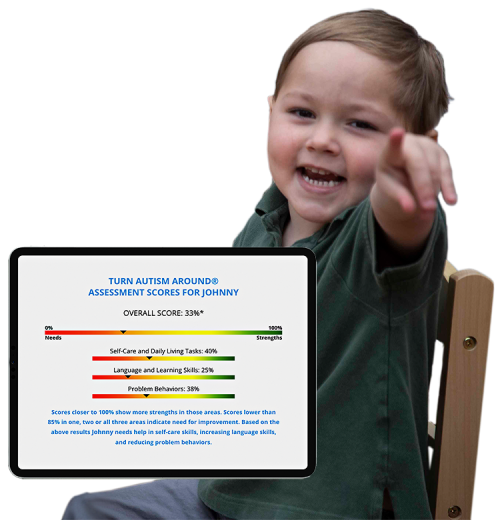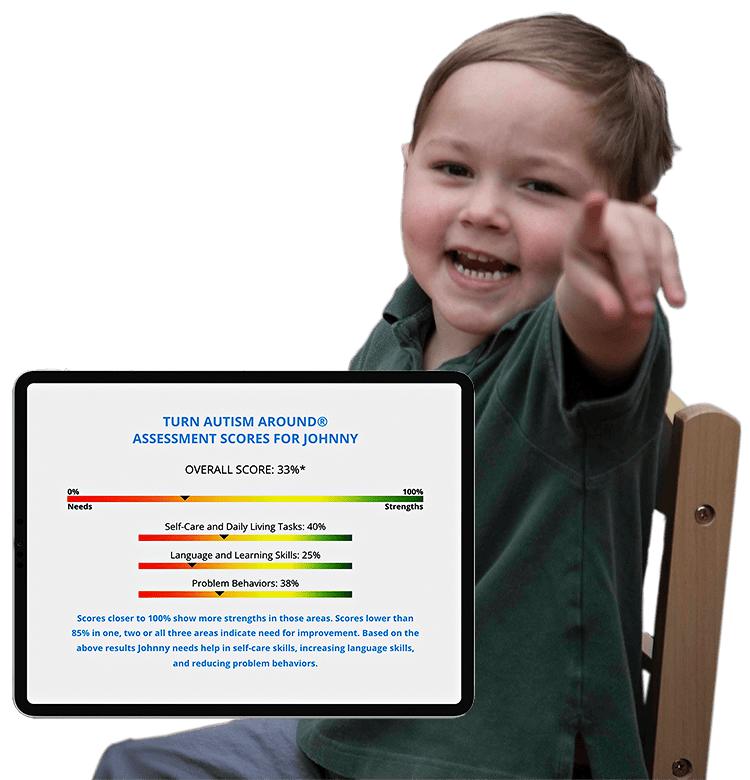Autism professionals and parents often have a lot of questions surrounding disciplining children with and without autism. There’s added confusion about what discipline is, and how you should do it. So today we’re talking all about the important subject of discipline and positive parenting. If you’re wondering how to discipline a child with autism, this blog is for you.
Each week I provide you with some of my ideas about turning autism around. So, if you haven’t subscribed to my YouTube channel, you can do that now.
The word discipline, according to the dictionary, means training people to obey rules. Or a code of behavior using punishment to correct disobedience. Therefore when you think of the word discipline you often think of punishment. As a Behavior Analyst who believes in an almost exclusive positive approach, this definition is upsetting. Even though some forms of discipline, like spanking, are now considered abusive, which I believe they should be, the use of other punishment techniques like time out, threats, and even yelling or verbal reprimands are used in schools and homes pretty frequently.
But for decades the research has shown that all animals, including humans, learn best in the absence of punishment. This includes rewarding positive behavior. The best book I know on parenting, with a totally positive approach, is called Positive Parenting by Glen Latham. This outlines the importance of a positive approach for all children.
Unfortunately, many do not use a completely positive approach, and often include punishment, or the threat of punishment, for kids at homes and at schools. There’s even a bigger issue with disciplining, and especially using punishment for kids with autism and related developmental disorders that are rarely highlighted. Today I am going to highlight some of the considerations for kids with special needs as it comes to discipline and positive parenting.
Autism Discipline: What You Should Not Be Doing
Before I teach you how to discipline a child with autism, let’s talk about what not to do. First, children with autism often have language and cognitive delays, making them incapable of understanding the language of even simple rules such as, we keep our hands to ourselves, or we need to be quiet now. A six-year-old might have the language ability of a two-year-old, and that child cannot be expected to know how to stand in line, keep an appropriate distance from other kids, and wait for his classmates to be ready. All children need to be taught based on their abilities, strengths, and needs, not their actual chronological age. Reprimanding or punishing a child for not following classroom rules when he doesn’t have the ability to comprehend these rules is just inappropriate.
Secondly, many parents and teachers of kids with and without disabilities don’t know how to discipline without threats and punishment. We were never taught this in college or even high school. Even if you took a course in college on classroom management, this classroom management course was not an intense focus on ABA, Applied Behavior Analysis, which is the science of changing socially significant behavior.
The methods used by well-meaning adults, currently, such as time out or yelling, often backfire and children become more disruptive over time, not less. It would be like having me try to fix your car. Since I’m not a mechanic and have no idea what I’m doing, I’d likely make a mess of things just trying to fix the car without education and experience. You may think that reducing problem behaviors is not rocket science, but I’ll tell you, it is complicated. And we can’t just use the techniques used by our parents as a guide for how we should discipline or have a positive parenting approach to raising kids or teaching them at schools. In general, I say that treating problem behavior by just making it up is a bad idea and it almost always makes the situation worse.
Thirdly, time out is one of the most overused disciplines and it’s a procedure used incorrectly most of the time. If time out is used for any child, it should be a rare occurrence and should work quickly to decrease behavior. The problem is, time out is almost never used correctly. As a parent, before I was a Behavior Analyst in the late 1990s, I used time out only a few times with my typically developing son Spencer, and never used it for Lucas, who has moderate to severe autism. As a BCBA since 2003, I’ve recommended time out on very rare occasions after careful assessment and a lot of data and oversight and with always trying a totally positive parenting approach first.
You shouldn’t be using time out daily or even weekly. If you are using time out so frequently, you are being too over-reactive and not preventing things enough. If you’re a professional using time out in any setting this should be a planned procedure approved by the team, including the parents, and you need to be collecting a lot of data using a positive approach in combination with any kind of time out procedure.
How to Discipline a Child with Autism Using Positive Parenting
Okay, now I’ve told you what not to do. Don’t treat a child based on actual age without considering his language and cognitive abilities, don’t use punishment willy nilly, or on a regular basis, and to really think about the use of time out. Now you’re probably wondering how to discipline a child with autism. I could go on and on for hours and hours, so these are going to just be a few tips.
- Each child with autism deserves an assessment of his or her strengths and needs. You can start with my one-page assessment as part of my three-step guide at marybarbera.com/join.
- If a child has the language ability of a much younger child, don’t expect them to follow the rules. They may need one-on-one support at school, and a lot of attention and teaching at home too, as just one example.
- You need to learn all you can about the science of Applied Behavior Analysis using a positive approach instead of punishment or threats with all the people in your life, especially children with autism.
I hope you enjoyed this video blog about how to discipline a child with autism. If you did, I would love it if you’d leave me a comment. Tell me what your idea of discipline is. Give me a thumbs up, share this video with others who might benefit, and to learn more about how to help children with autism I would like it if you’d download my free 3-step guide to turn autism around for your child or client.








